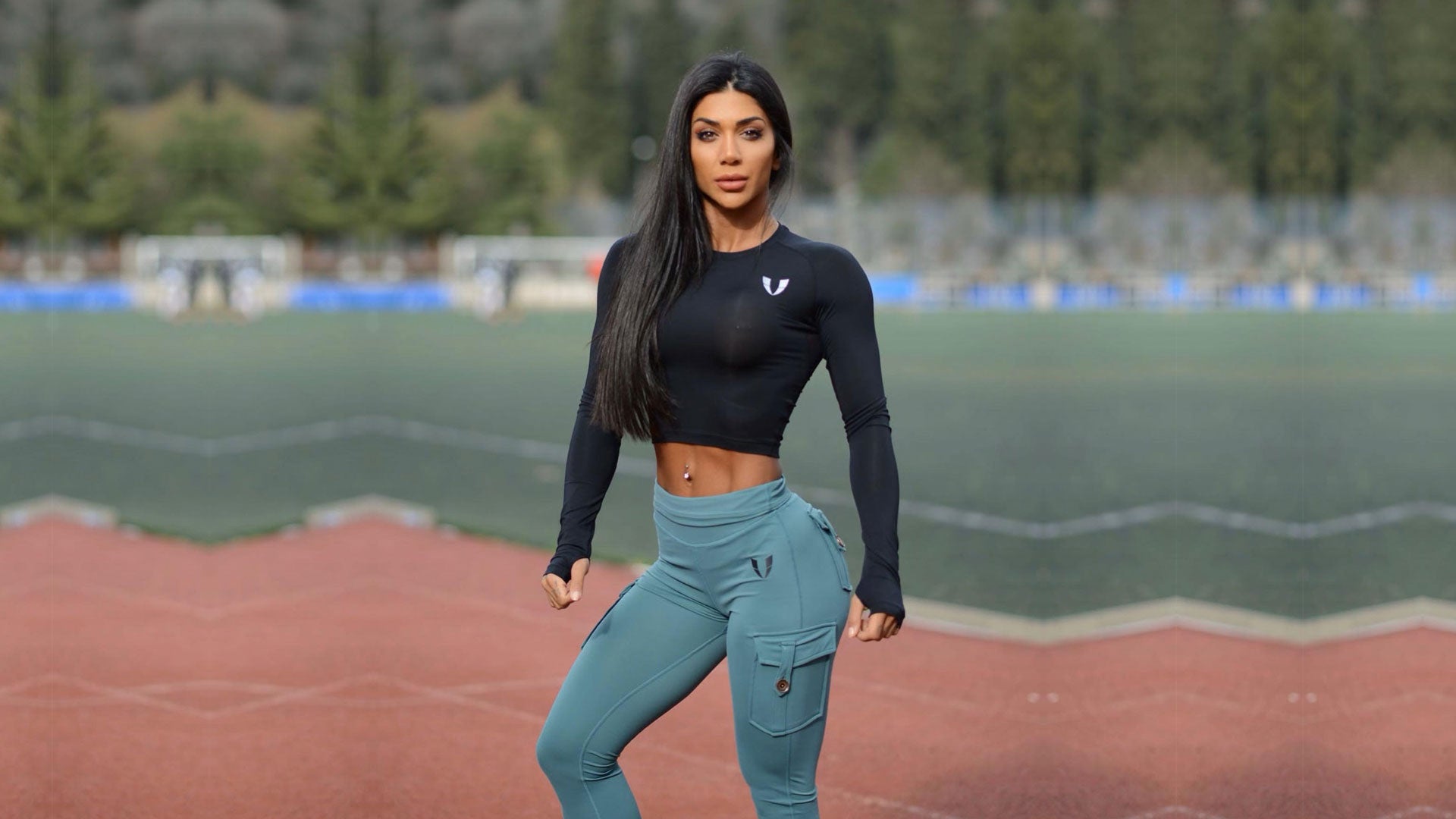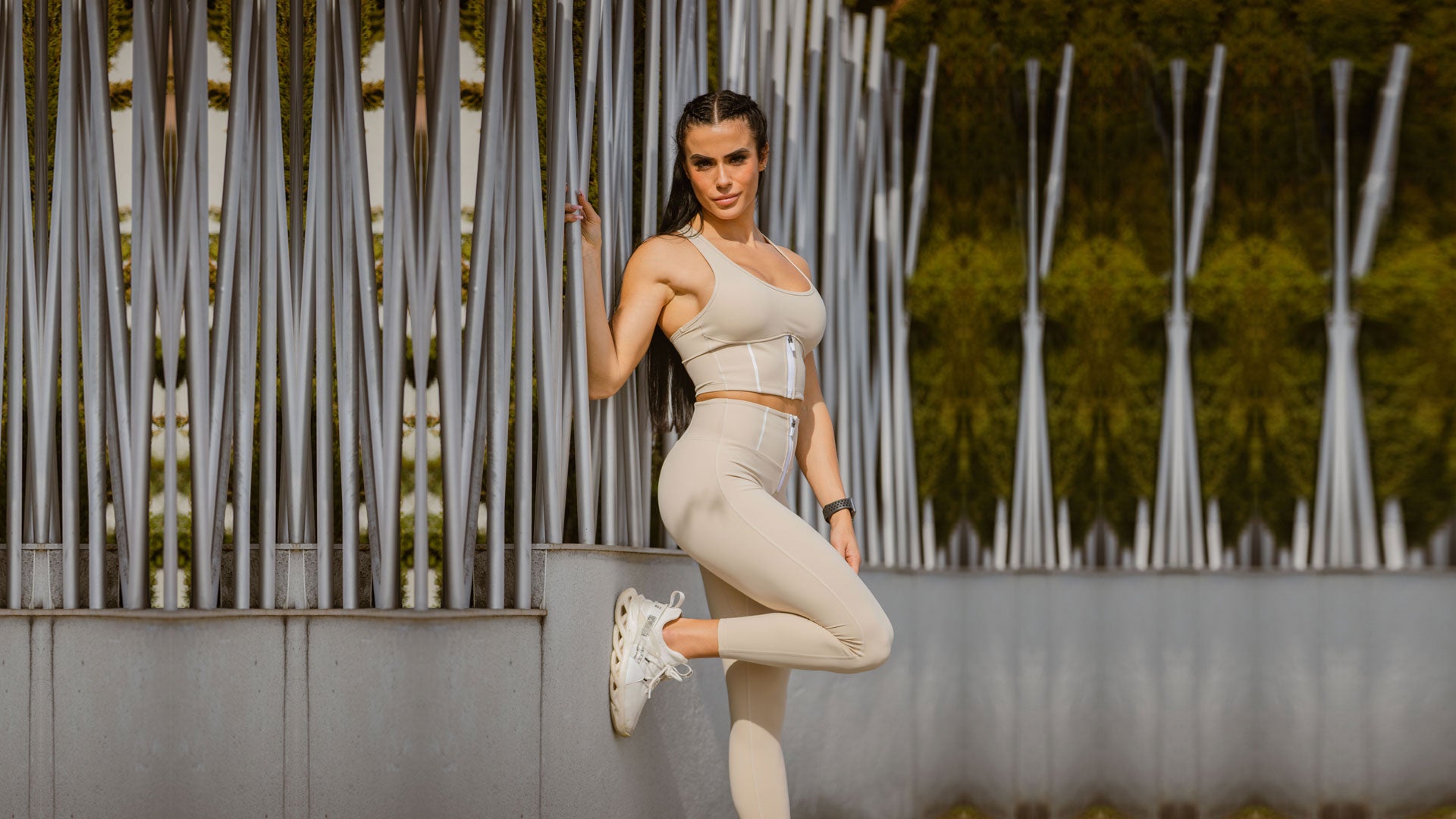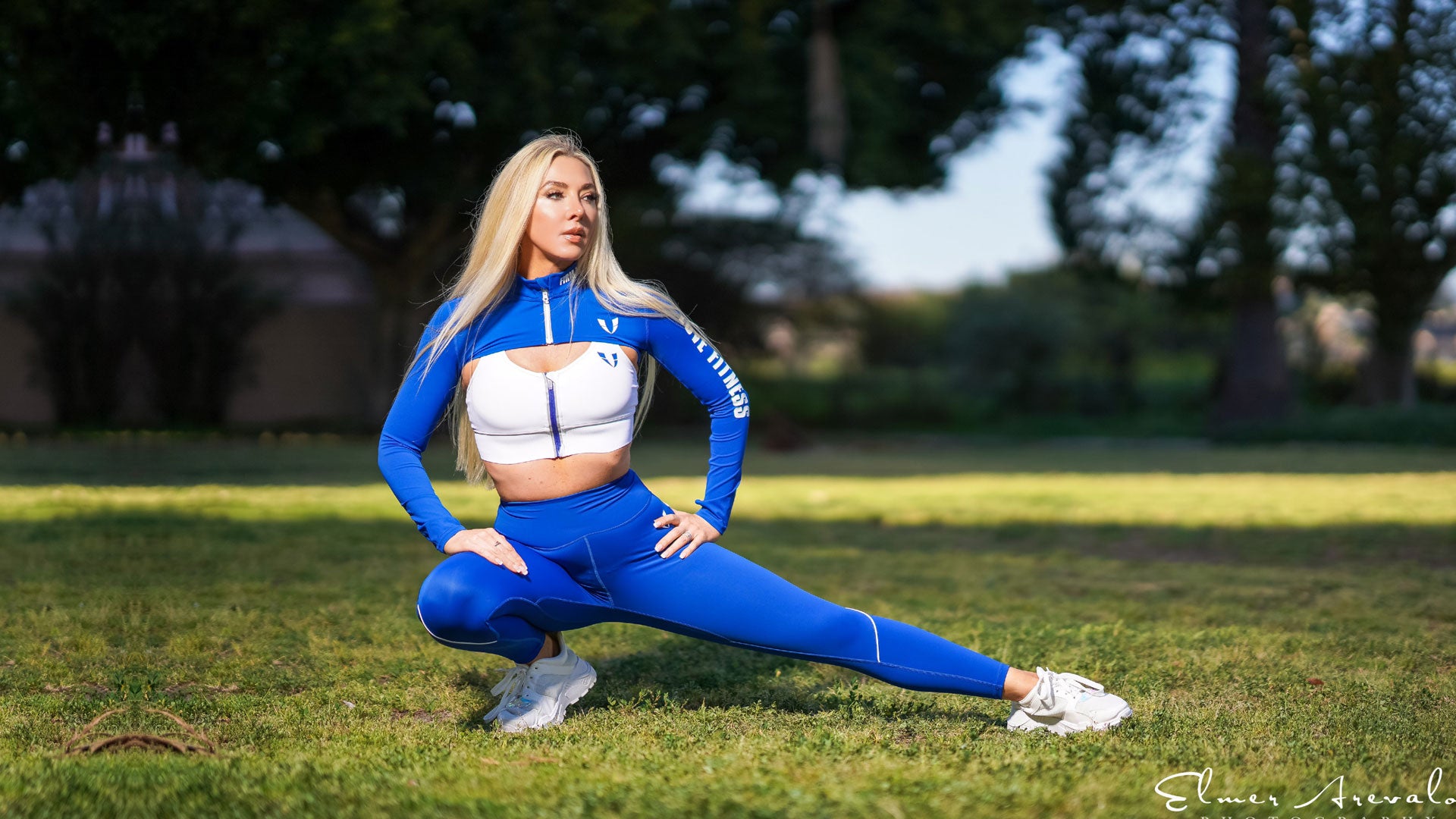
How to build core strength?
Core exercises need to be a major focus of any workout plan. Strengthening the core improves balance and posture. It can alleviate lower back pain and prevent injuries. It also helps with performance in other exercises. A weak core can cause the hips to sag in pushups, and the lower back to round in squats. A strong core helps for daily activities, such as walking a dog, raking leaves, and bending over to pick objects up. In fitness training, women push themselves for those few extra seconds in a plank, and dig deep for a few extra crunches, in pursuit of a ripped six-pack. A slim-fit workout jacket will show off those firm abs that took hard work and dedication to achieve. These simple exercises to build core strength don't require any equipment, they are low-impact, and they can be performed by women of any fitness level:
The best core exercises to improve strength
Plank
This exercise targets the rectus abdominis (flexes the spinal column and trunk) and transverse abdominis (stabilizes the lower back and pelvis). Planking is a full-body workout that also strengthens the back, hips, glutes, legs, arms, chest, and shoulders.
Directions
The exercise can be performed as a low plank or high plank. In both positions, the body is in a straight line from the heels to the top of the head. Resting on the toes, the feet are no wider than hip-width apart. Bending the legs releases tension, so the legs should be kept straight. Squeezing the glutes will help prevent the hips from lifting. It is especially important to focus on proper form toward the end of the exercise. When the body fatigues, a tendency might be to raise the hips too high or drop them too low. In a low plank, the forearms and elbows rest on the floor, with the elbows directly under the shoulders. In a high plank, the hands hold the body up and the arms are straight, with the wrists directly under the shoulders.
Variations
Plank hip dips, plank with rotation, and Spiderman plank crunches (the knee moves to the outside and toward the elbow) all activate the obliques. Plank kickbacks work the legs and glutes, in addition to the abs. Seesaw plank, in which the body rocks back and forth, tones the arms. Plank jacks, in which the feet jump out and in, adds cardio to this core exercise. Mountain climber is a popular exercise that is performed in a high plank position.
Side Plank
The obliques are targeted in this exercise. These muscles allow the trunk to twist, and exercises that strengthen them should be part of a well-rounded workout plan.
Directions
The exercise can be done in a low (resting on forearm and elbow) or high (resting on hand) position. With straight legs, the hips are raised and the top arm is extended straight up. When the hips are too low, this places strain on the shoulder.
Variations
To increase the difficulty, the top leg can be raised so that it is parallel to the floor. The leg can either be held in that position or be moved up and down for side plank leg raises. Side plank with rotation involves reaching the top arm under the body and then returning the arm straight up. In this variation, it is important to keep the gaze at the hand throughout the movement to fully activate the obliques.

Sit-Ups
This exercise primarily targets the rectus abdominis. With a full range of motion being used, the hips, chest and neck are strengthened as well.
Directions
Lying on the back with feet on the floor and knees bent, the hands are either on the back of the head or the arms are crossed on the chest. The body slowly comes up to a seated position and then moves back down. Going too fast will cause the body to swing. It is important not to use momentum, as doing so won't work the abs. To prevent the feet from lifting up, dumbbells can be placed under the feet.
Variations
The exercise can also be performed with straight legs, which increases the difficulty. Sit-ups can be done holding a weighted plate, kettlebell, or medicine ball straight up. Decline sit-ups are done by locking the feet in place on an inclined bench.
Crunches
The rectus abdominis is primarily worked in this exercise. Since there is a limited range of motion, the abs are isolated.
Directions
The starting position for this exercise is the same as the sit-up. If the hands are on the back of the head, the grip should be loose to prevent neck strain. The head and shoulder blades are lifted off the floor and then dropped back down. The slow movement in both directions will fully engage the core. The chin is pointed to the chest and the elbows are kept out.
Variations
Elevated crunches are done by placing the feet in the air, on a wall, or on a bench. Butterfly crunches involve putting the soles of the feet together. Bicycle crunches, in which the elbow moves to the opposite knee, target the obliques. In reverse crunches, the hips are lifted and the knees move toward the chest.
V-Ups
This is another exercise that mostly works the rectus abdominis. It's a full-body exercise with movement in the legs and arms that improves balance. Since the legs are raised high, flexibility is also enhanced.
Directions
Lying on the back, the legs and arms are straight with the arms stretched back. The feet move toward the hands and the hands move toward the feet, with the body forming a "V" shape. Keeping the core tight will help prevent the back from arching on the way down. Moving too fast will cause momentum to be used. It is especially important to focus on going slow during the last few reps, when there is a higher likelihood that the body will swing up.
Variations
Alternating V-ups, in which one leg is raised at a time and the hand reaches for the opposite foot, work the obliques. V-passes involve placing a stability ball between the feet on the way up, lowering it to the floor on the way down, and then grabbing the ball from between the feet the next time going up. V-crunches are done in a seated position, leaning back and straightening the legs on the way back, and leaning forward and moving the knees to the chest on the way forward.
Flutter Kicks
While targeting the rectus abdominis, this exercise also strengthens the hips, glutes, and quads. The motion resembles the leg movement used in swimming.
Directions
Lying on the back, the straight legs are raised slightly off the floor and kicked in a fast motion. To prevent strain on the back, the back should be kept flat on the floor and not arched. The toes point up and the legs stay low to the floor.
Variations
Scissor kicks are done in the same position, with the legs moving side to side and one leg coming over the other. Flutter kicks can also be done in a seated position (yoga boat pose).
Dead Bug
This exercise primarily targets the transverse abdominis. It's a great way to improve core stability.
Directions
Lying on the back, the legs are raised and bent in the starting position with the knees in line with the heels. The arms are extended straight up. One leg is extended and lowered, while the opposite arm is lowered behind the head (the foot and hand come close to the floor with touching the floor). After returning to the starting position, the movement is repeated on the other side. The exercise is made easier by only moving the legs or by only moving the arms.
Variations
Reaching the arms and knees up throughout the exercise increases the challenge. Performing the dead bug on a stability ball is a great test of balance.
Bird Dog
This exercise is another way to strengthen the transverse abdominis. It also improves balance.
Directions
Starting with the hands and knees on the floor (wrists are directly under shoulders and knees are directly under hips), one leg is raised until it is parallel to the floor with the toes pointed down. At the same time, the opposite arm is raised to shoulder level. Both the leg and the arm are straight. The position is held for 1-2 seconds, before returning to the starting position and repeating the movement on the other side.
Variations
In a bird dog crunch, after extending the leg and arm, the knee moves to the elbow and the elbow moves to the knee. The bird dog can also be done in a high plank position.
Part of a Balanced Workout Plan
These core exercises provide a great foundation for a workout program. For example, pushups can be improved by the high plank exercise since high plank is the starting position for pushups. Core exercises such as V-ups and flutter kicks that have a lot of leg movement will strengthen the legs for exercises such as squats and lunges.




Lascia un commento
Questo sito è protetto da hCaptcha e applica le Norme sulla privacy e i Termini di servizio di hCaptcha.